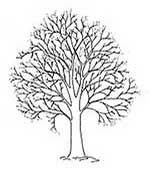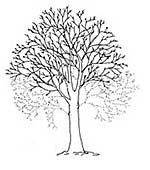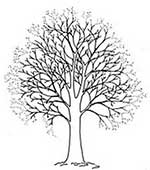Tree protection check
If you wish to do works to trees within the London Borough of Sutton you will need to check the following before starting work yourself, or contracting work on your trees. You must check that the trees in question are not protected by either a Tree Preservation Order, Conservation Area or Planning Conditions, this can be done for free by following the guidance below, or you can pay a fee for our tree admin team to conduct this on your behalf.
Tree preservation order (TPO) and conservation area
To find out whether there is a TPO or Conservation Area status placed on the tree please visit our tree status map.
Planning conditions
To view Planning applications which have been granted within Sutton please visit our Public Access portal.
LBS tree status check
If you would like our team to conduct a search on your behalf you will first need to visit our payments page and make a £20 payment (per site) under Planning - Miscellaneous - Planning - Copies of Documents. Once you have a receipt number please email our Tree Works team with details of the site, or a site plan and quote your receipt number, we aim to respond within 48 working hours.
Applying for tree work
Should you need to make an application for your tree works you should apply online via the Planning Portal website. Alternatively you can choose to download and submit an application by email/post.
Application Help
When describing the works you must include a detailed description of the works including the measurements of the works (please see tree terminology for further information).
Examples of acceptable descriptions;
- Prune tree to clear garage roof, 2.5-3m. Remove lower branches to leave 3m clear stem to first branch.
- Fell apple tree, cut back holly to clear roof line 3m, reduce ash tree overall by 3m top and 2m lateral branches
- Crown thin tree 15%, crown reduce by 3m, remove lower branches to leave 4m clear stem
- Selectively reduce overhanging branches by 2.5m
You will then need to provide a drawing showing the location of all trees within the site indicating the trees which you wish to apply for works to - view an acceptable example drawing.
Please note that if you are applying for works to a diseased or dangerous tree you should also provide an evidence report to support your application.
Tree Terminology
Crown thinning (expressed as a % of live, healthy branches to be removed):

The removal of small/lesser branches to reduce the density of the crown without altering the overall shape of the tree. Typically specified to allow more light into windows and gardens, thinning reduces the amount of branches and foliage allowing more light and air through the tree.
Crown Lifting (or Crown Raising) (needed in Metres)

Crown lifting is the removal of the lowest branches and/or preparing of lower branches for future removal. Good practice dictates crown lifting should not normally include the removal of large branches growing directly from the trunk as this can cause large wounds which can become extensively decayed leading to further long term problems or more short term biomechanical instability. Crown lifting on older, mature trees should be avoided or restricted to secondary branches or shortening of primary branches rather than the whole removal wherever possible. Crown lifting is an effective method of increasing light transmission to areas closer to the tree or to enable access under the crown but should be restricted to less than 15% of the live crown height and leave the crown at least two thirds of the total height of the tree. Crown lifting should be specified with reference to a fixed point, e.g. ‘crown lift to give 5.5m clearance above ground level’.
Crown Reduction (usually expressed as branch length (in m) to be removed):

The overall width and height of a tree is reduced by shortening branches to a suitable growing point or smaller branch (typically to a branch 1/3rd the diameter of the (cut) parent stem). Carried out on peripheral branches to reduce the overall size of the tree, rather than affecting crown density. Reductions are usually carried out to leave a balanced shape, but partial (side) reductions may be considered where an uneven canopy spread overhangs buildings/guttering etc. Annotated photographs can sometimes be helpful describing the intended result.
Pollard
The initial removal of the top of a young tree at a prescribed height to encourage multi-stem branching from that point, traditionally for fodder, firewood or poles. Once started, it should be repeated on a cyclical basis always retaining the initial pollard point, or boiling as it becomes known. Mature trees that have not previously received this treatment may not respond well and it is unlikely that this will be considered an appropriate management operation.